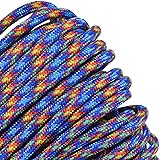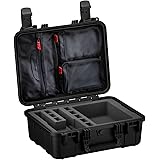Crafting Primitive Tools for Survival: Essential Skills for Hunting and Defense
In a world increasingly reliant on technology, a fundamental question often arises: what if those conveniences were suddenly unavailable? The modern individual is frequently accustomed to readily accessible tools and resources. However, when faced with challenging outdoor conditions or a need for true self-reliance, the ability to create essential items from raw materials becomes profoundly important. This skill, often overlooked, is a cornerstone of preparedness and survival. As is subtly demonstrated in the video above, where the sounds of wood being shaped fill the air, the journey into crafting primitive tools for survival is a vital path. It is a path that equips one with the means for hunting, defense, and daily sustenance, fostering a deep connection with the natural world.1. Why Primitive Tools Remain Indispensable
The significance of rudimentary implements in a survival scenario cannot be overstated. When modern equipment is lost or breaks down, an understanding of primitive technology is what allows for continued function and safety. These skills provide a foundational layer of preparedness, ensuring that basic needs can be met regardless of external circumstances.
Imagine if one were suddenly placed in a remote wilderness environment. Without a knife, an axe, or a shovel, even simple tasks become monumental challenges. Food preparation is made difficult, shelter construction is hampered, and the ability to defend oneself or one’s resources is severely limited. Thus, the knowledge of how to craft these fundamental items from the surrounding environment is not merely a hobby; it is considered a critical survival skill. The practice of bushcraft, which encompasses many such skills, emphasizes resilience and resourcefulness.
2. Understanding Your Materials: The Foundation of Primitive Crafting
Successful primitive tool making begins with a keen eye for natural materials. The environment provides a wealth of resources, each possessing unique properties that dictate its best use. Knowledge of these materials is crucial for effective crafting.
-
Wood: This is arguably the most versatile material available. Different types of wood offer varying degrees of hardness, flexibility, and strength. Hardwoods, like oak or hickory, are preferred for striking tools or weapon shafts, as they are less likely to break. Softer woods, such as willow or pine, might be used for carving smaller implements or for fire starting components. The grain of the wood is also important; straight-grained wood is generally more predictable and stronger for handles and shafts.
-
Stone: Flint, chert, obsidian, and quartzite are excellent for creating sharp edges for cutting, scraping, and piercing. These materials are fractured in a predictable way, allowing for the creation of blades and arrowheads. Proper identification of suitable stone is a skill in itself, as not all rocks will flake predictably.
-
Bone and Antler: These materials are highly durable and can be shaped into needles, awls, fishhooks, and even weapon points. They offer excellent strength-to-weight ratios and are often found as remnants from animal kills, making them a sustainable resource.
-
Fibers: Plant fibers from nettles, yucca, or tree bark can be processed into cordage for binding, weaving, and trapping. Strong cordage is an indispensable element in primitive tool assembly.
By carefully selecting and understanding the properties of these natural resources, the effectiveness and durability of any crafted tool are significantly enhanced.
3. Basic Woodcraft: Starting Your Journey in Tool Making
Woodcraft is often where the journey into primitive tool making begins, as wood is widely available and relatively easy to work with using minimal tools. The sounds of wood being worked, as heard in the accompanying video, are a testament to the primal nature of this skill. Simple techniques can be employed to create highly functional items.
Making a Simple Hunting Spear
A basic hunting spear is one of the earliest and most effective primitive weapons or tools that can be crafted. It is primarily used for defense, fishing, or small game hunting.
-
Selection: A straight, strong sapling or branch, roughly arm’s length or longer, is chosen. Hardwoods are preferred for durability.
-
Debarking and Shaping: The bark is removed using a sharp stone or another tool. One end of the shaft is then sharpened into a point. This can be done by carefully scraping or carving with a stone blade. The point should be symmetrical for better flight or thrust.
-
Fire Hardening: For increased durability, the sharpened tip can be gently passed through a fire. The heat dries out the wood and creates a harder, more resilient tip. Care must be taken not to burn the wood, but rather to char and scrape it clean, repeating the process until a hard, dark point is achieved.
Imagine if a sturdy spear could be quickly fashioned for protection against an unforeseen threat; this simple skill could prove invaluable.
Fashioning a Basic Digging Stick
A digging stick is a fundamental tool for gathering roots, tubers, and even for preparing ground for a shelter or fire pit.
-
Selection: A stout, straight piece of wood, about chest height, is chosen. One end should be naturally pointed or can be easily sharpened.
-
Shaping the Tip: The working end is sharpened to a wedge or point using a stone tool or by abrading it against a rough rock. This sharp end allows it to penetrate soil more easily.
-
Optional Fire Hardening: Similar to the spear, the tip of the digging stick can be fire-hardened to reduce wear and tear when used against tough soil.
This simple tool, easily crafted, significantly reduces the effort required for foraging and ground manipulation, illustrating the efficiency gained from even the most basic primitive tools.
4. Tools for Defense: Preparing for the Unexpected
While the focus is often on sustenance, the importance of self-defense cannot be overlooked in a survival scenario. Primitive weapons for defense are typically simple, relying on raw power and intimidation rather than complex mechanisms. Preparedness for unforeseen encounters is a key aspect of wilderness survival.
Imagine if a sudden need for protection arose in an unfamiliar environment. A heavy club, for example, is a straightforward and effective defensive tool. A sturdy, dense piece of hardwood, with a comfortable grip, can be fashioned into a powerful bludgeon. The weight and balance of the club are carefully considered for maximum impact. Sometimes, a natural knot or burl on a branch can be utilized to create a more formidable head for the club. These self-defense tools are not just for animal encounters; they provide a sense of security against any potential threat.
Another option is a staff, which, while not primarily a weapon, offers reach and leverage. A strong, straight length of wood, taller than the user, can be used for defense, as a walking aid over difficult terrain, or even as a simple lever. The ability to quickly recognize and utilize a suitable branch for such purposes is a valuable bushcraft skill.
5. The Mindset of a Primitive Crafter: More Than Just Tools
Beyond the physical skills of primitive tool making, an equally important aspect is the cultivation of a specific mindset. This mental approach is integral to successful wilderness living and self-reliance.
Patience is a virtue in primitive crafting. Tasks that might take minutes with modern tools can require hours of dedicated effort using natural materials. Hurrying often leads to mistakes or breakage. Observation is another critical skill. The primitive crafter must constantly observe their surroundings, noting the types of trees, rocks, and other resources available, as well as the signs of animal activity. This keen awareness informs decision-making and resource gathering.
Resourcefulness is perhaps the defining characteristic. It is the ability to look at what is available and imagine its potential uses, often outside its conventional purpose. Every stick, stone, and fiber is considered for its utility. This mindset extends beyond tool making; it permeates all aspects of survival, from finding water to building shelter. A deep respect for nature is also fostered through this practice, as one becomes intricately connected to the ecosystem, relying directly on its offerings.
6. Safety First: Essential Considerations When Crafting
While engaging in the rewarding practice of crafting primitive tools, safety must always be prioritized. Working with raw materials and rudimentary implements carries inherent risks, especially when sharp edges or heavy objects are involved.
-
Proper Tool Handling: It is imperative that all tools, whether a stone knife or a digging stick, are handled with extreme care. Cuts and scrapes are common, but serious injuries can be prevented by maintaining focus and understanding the limitations of each tool. Always work away from the body when carving or scraping.
-
Personal Protective Equipment: While often minimal in a true survival scenario, simple precautions can be taken. Gloves, if available, can protect hands from splinters and abrasions. Eye protection is also wise, particularly when striking stone or wood, as small fragments can fly off at high speeds.
-
Environmental Awareness: The crafting area should be clear of obstructions, and footing should be stable. Awareness of one’s surroundings helps prevent accidental injuries to oneself or others. Maintaining a clear workspace is always advisable.
-
Fire Safety: When fire-hardening tools, extreme caution is necessary. The fire must be contained, and combustible materials kept at a safe distance. Overheating wood can weaken it or cause it to ignite uncontrollably.
By adhering to these basic safety principles, the art of crafting primitive tools can be practiced effectively and responsibly, ensuring that the journey into bushcraft and survival skills is both productive and safe. The ability to fashion rudimentary tools from the natural world is a powerful skill, equipping individuals with essential means for hunting and defense.











